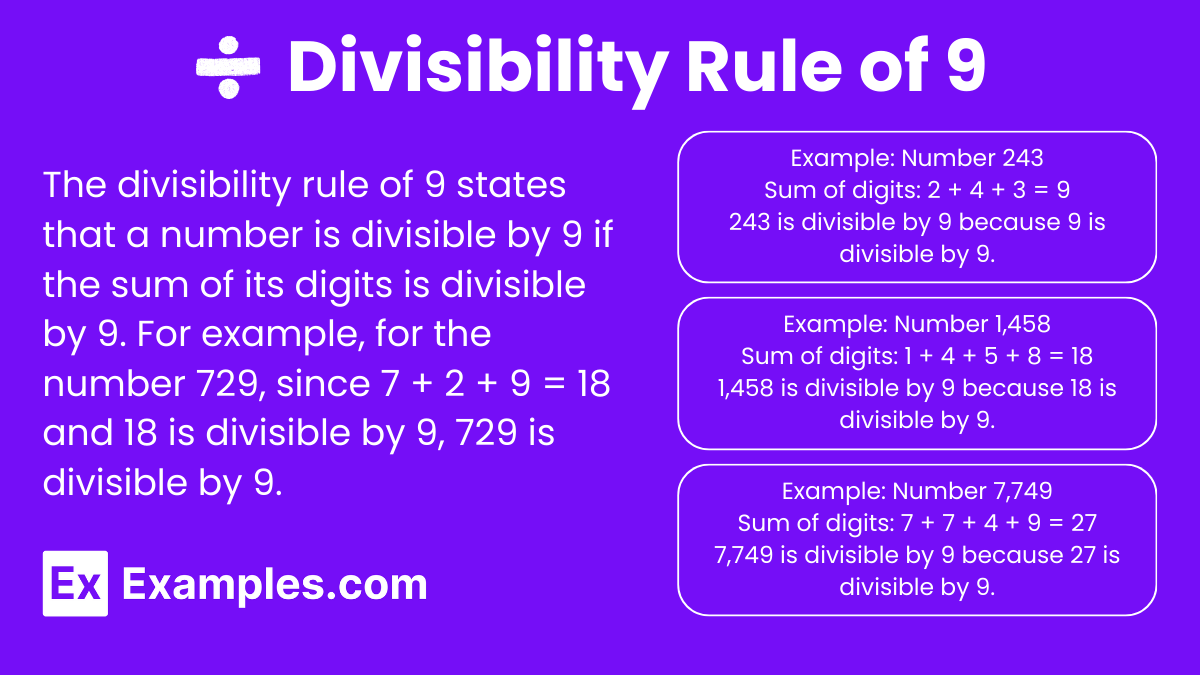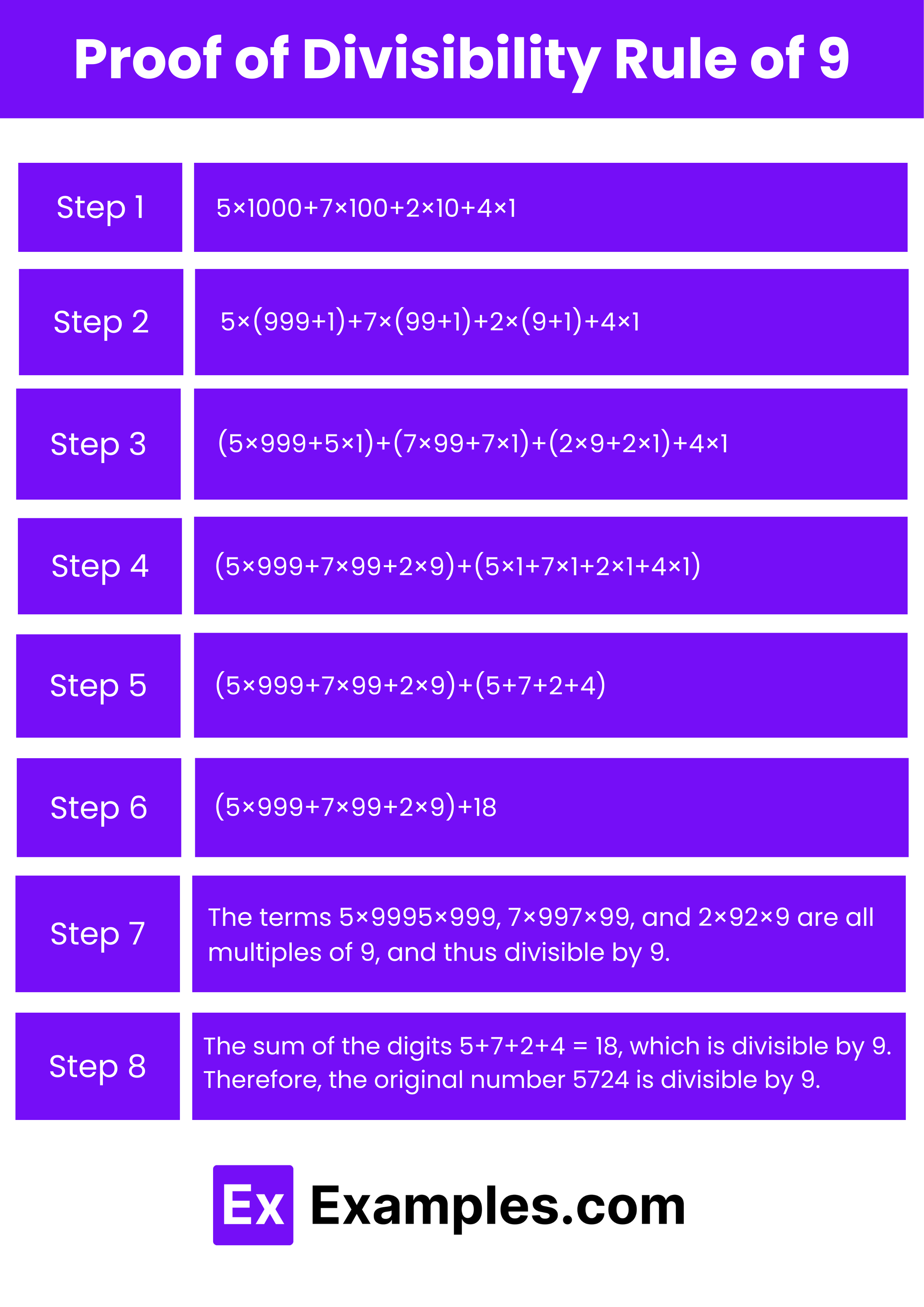Which of the following numbers is divisible by 9?
123
124
125
126


The divisibility rule of 9 is a handy mathematical tool used to determine if a number is divisible by 9 without performing division. To apply this rule, sum the digits of the number in question. If the resulting sum is divisible by 9, then the original number is also divisible by 9. This concept is essential in various branches of mathematics, including rational and irrational numbers, algebra, integers, and operations like addition, subtraction, multiplication, and division. Understanding these rules simplifies complex calculations and aids in number theory analysis.
https://images.examples.com/wp-content/uploads/2024/05/Proof-of-Divisibility-Rule-of-9.png

https://images.examples.com/wp-content/uploads/2024/05/Proof-of-Divisibility-Rule-of-9.png
Let’s prove the divisibility rule of 9 using the number 5724 as an example.
The divisibility rule of 3 states that a number is divisible by 3 if the sum of its digits is divisible by 3. Here’s how you can check:
The divisibility rule of 9 states that a number is divisible by 9 if the sum of its digits is divisible by 9. Here’s how you can check:
The divisibility rule of 9 states that a number is divisible by 9 if the sum of its digits is divisible by 9. Here’s the step-by-step process to check:
The divisibility rule of 11 states that a number is divisible by 11 if the difference between the sum of the digits in odd positions and the sum of the digits in even positions is either 0 or divisible by 11. Here’s how to check:
To quickly check if a number is divisible by 9, add up all the digits of the number. If the sum is divisible by 9, then the original number is also divisible by 9.
Sure! For the number 729, sum the digits: 7 + 2 + 9 = 18. Since 18 is divisible by 9, the number 729 is also divisible by 9.
Yes, the shortcut is to add the digits of the large number repeatedly until you get a single digit. If this single digit is 9, then the original number is divisible by 9.
Yes, the divisibility rule of 9 applies to negative numbers. Simply sum the absolute values of the digits, and if the sum is divisible by 9, then the negative number is also divisible by 9.
Yes, the rule can be used in algebraic expressions where the coefficients sum to a number that is divisible by 9.
The rule helps in quickly determining factors of numbers and can be used to simplify large arithmetic problems by breaking them into smaller, more manageable parts.
Yes, both rules are similar in that they involve summing the digits of a number. However, for 9, the sum must be divisible by 9, while for 3, the sum must be divisible by 3.
The rule is useful in number theory, cryptography, coding theory, and error detection in identification numbers like bank account numbers and credit card numbers.
Yes, the rule can be extended to other bases. In base-N, a number is divisible by N−1 if the sum of its digits in that base is divisible by N−1. For example, in base 8, a number is divisible by 7 if the sum of its digits is divisible by 7.
Text prompt
Add Tone
10 Examples of Public speaking
20 Examples of Gas lighting
Which of the following numbers is divisible by 9?
123
124
125
126
Which number is not divisible by 9?
441
333
513
555
What is the sum of the digits of 198?
18
19
20
21
Which number is divisible by 9?
3456
2345
1245
5432
What is the sum of the digits of 891?
18
9
12
15
Which of these numbers is not divisible by 9?
180
999
162
252
How do you determine if a number is divisible by 9?
The number must end in 0 or 5
The sum of its digits must be divisible by 9
The number must be even
The number must end in 9
Which of the following numbers is divisible by 9?
1234
987
5678
2345
Which of these numbers is divisible by 9?
150
216
345
678
What is the sum of the digits of 324?
9
10
11
12
Before you leave, take our quick quiz to enhance your learning!

